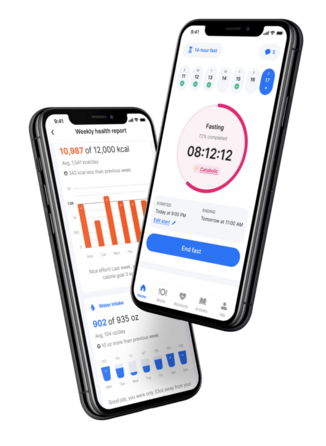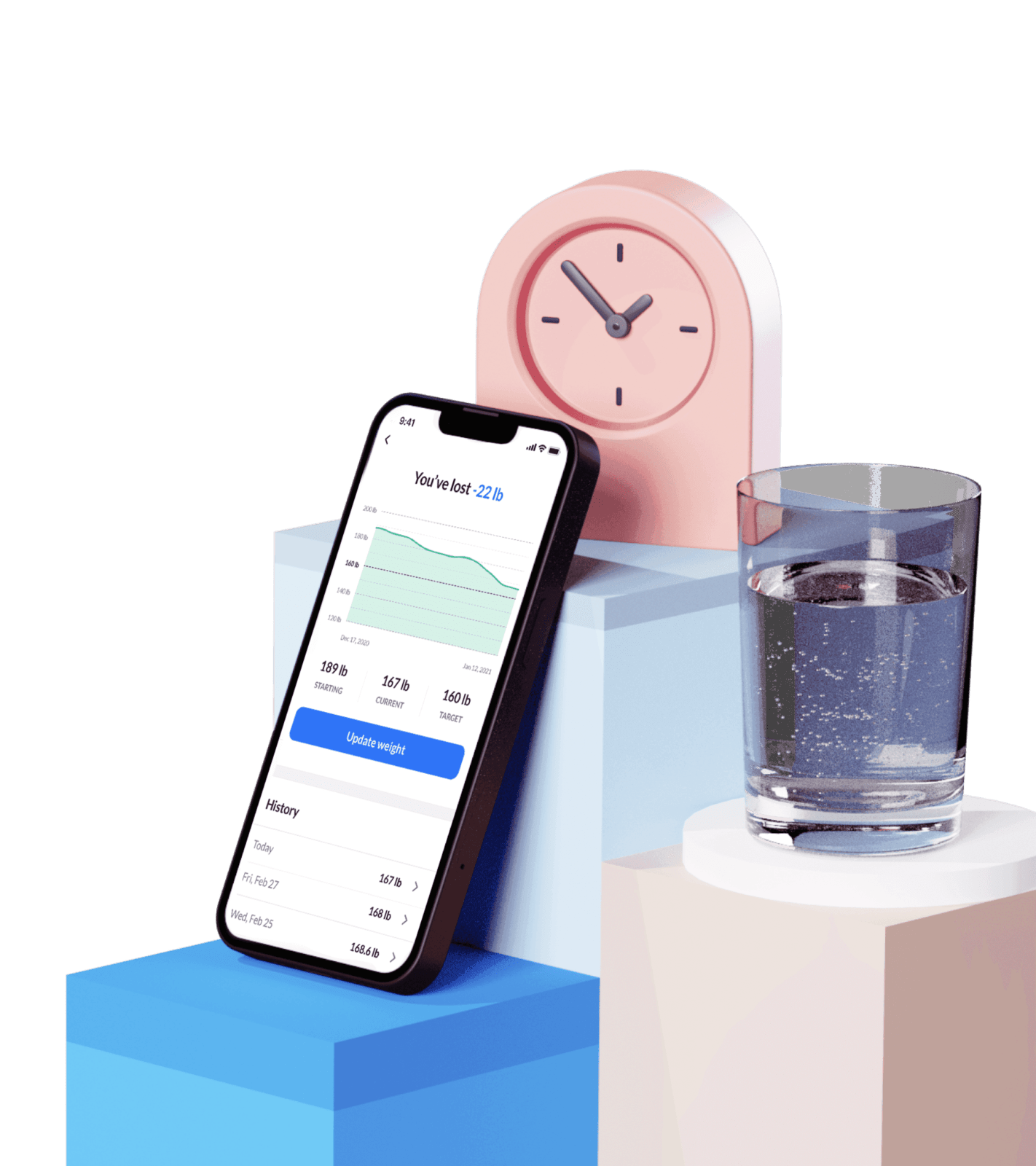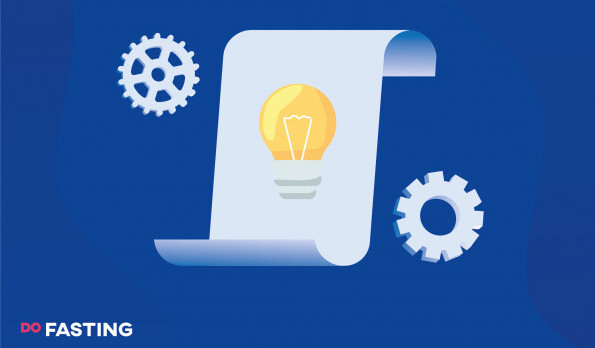Contents
What Is Alternate Day Fasting?
Alternate day fasting (ADF) is a type of intermittent fasting that involves switching up between fasting days and non-fasting days, referred to as eating or feeding days.
ADF is thought to produce significant results when it comes to weight loss and offers other health benefits like reduced blood pressure, lower levels of cholesterol, and reduced risk of diabetes.
Unlike other forms of intermittent fasting, an ADF schedule may allow restricted calories on fasting days, making it an accessible fasting style for beginners.
On eating days, you may eat how you please, though the best results are seen when a healthy and balanced diet is followed.
Fasting days also permit a number of calorie-free drinks, like unsweetened black coffee, herbal tea, lemon water, or just plain water.
This kind of intermittent fasting method promotes weight loss, lowers the risk of cardiovascular disease, and reduces the chances of developing type 2 diabetes.
Take a
1-minute quiz
and discover how much weight you can lose with DoFasting!

How does ADF affect metabolism?
It has been proven that short-term fasting can boost the metabolism by 14%. Though long-term fasting may induce starvation mode, short-term fasting does not appear to.
Short-term fasting, like that which is done on the alternate-day fasting schedule, is short enough that the body doesn’t fall into starvation mode where the metabolism drops.
This boost in metabolism helps to promote weight loss and may help you to keep the weight off if you decide to stop fasting.
How does ADF affect physique?
ADF is thought to significantly reduce body weight and visceral fat.
The alternate-day fasting diet is actually thought to be better at promoting weight loss than other kinds of fasting methods.
There is also a chance that you may develop more lean muscle, though targetted muscle building may be more difficult during a fasting state.
How to Do ADF and See Positive Results?
ADF is a great option for people who are looking to lose weight and boost their health. Though not suitable for everyone, like those with eating disorders or who are pregnant, the effects tend to be seen across the board.
There are a few ways that you can see positive results more easily with alternate-day fasting and we have summarized them below.
Adjust your alternate-day fasting schedule if you are not feeling well
An important part of ADF is prioritizing your health, through how you eat on eating days and how you change your schedule when you are ill.
If you have become ill, you should not continue with your fasting days and instead, get enough rest to help your body to replenish itself.
You should also ensure you eat enough food, loaded with nutrition, to help give your body exactly what it needs to get better.
Restricted calories may make you feel worse if you are sick so don’t try to ‘power through,’ and take the time your body needs to get back to full health.
Start using the fasting app to keep accurate track of calories
Sometimes, the tracking and organizing part of alternate-day fasting can put people off which is why you should try using an app, like our own DoFasting app, to track and organize your day.
The app can help you to stay on track by reminding you of your fasting window, keeping track of calories in a calorie log, helping you log water, and reminding you to keep active with a step tracker.
The app also has a range of HIIT and other workouts to help you stay physically active while practicing alternate-day fasting.
Having somewhere to keep track of and organize your fasting can make it feel much simpler and much more manageable.
Use an appetite suppressant to avoid feeling hunger pangs during the fasting days
An appetite suppressant, like the DoFasting appetite suppressants, can help you to avoid hunger pangs during your fasting days.
Very low in calories and packed full of nutrients, like fiber, appetite suppressants help you to stay on course and can ensure your digestive health remains good while you fast.
The fiber in appetite suppressants, in the form of glucomannan, helps to fill the stomach and send a signal to the brain to tell it the stomach is full.
This means that you’re unlikely to suddenly get cravings or feel the need to eat during your fast.
Take a
1-minute quiz
and discover how much weight you can lose with DoFasting!

How Does an ADF Schedule Look Like?
The most common alternate day fasting plan looks like fasting, then eating, then fasting, and so on. The idea is that you fast on alternate days, always breaking a fast with an eating day before the next.
Fasting on alternate days keeps the fast short enough that the body does not slip into starvation mode and keeps it in an active state of ketosis to burn as much fat as possible from the body.
During a period of 2 – 12 weeks, it is thought that someone following a schedule of alternate-day fasting would be able to lose between 3 – 8 % of their body weight.
What Are the Health Benefits of Alternate Day Fasting?
Below, we have summarized a number of the incredible health benefits of alternate day fasting for you to peruse.
ADF can accelerate the weight loss process
Alternate-day fasting promotes weight loss in a number of ways and is a recommended method of weight loss for obese adults.
The first way is that due to the daily calorie restriction, your caloric intake across the week is reduced. This means you’re restricting calories, eating at a calorie deficit, and burning more calories than you are taking in.
A calorie deficit is one of the best ways to promote weight loss and the aim of most diets is to produce one. Calorie restriction is a very good method of weight maintenance too.
The other way that alternate day fasting promotes and encourages healthy weight loss is through the induced state of ketosis that fasting causes.
Fasting, or eating an extremely limited amount of calories can induce a state called ketosis which promotes burning fat over blood glucose for fuel.
This metabolic switch usually occurs after 10 – 12 hours of fasting so a full day fast allows for a long period of ketosis.
It is for this reason that this form of intermittent fasting may produce such great results when it comes to the loss of fat mass.
Cardiovascular health may be improved due to fasting on alternate days
Many of the markers of cardiovascular disease can be linked with being overweight, meaning weight loss through ADF can help to reduce your risks of these diseases.
In addition, markers like high cholesterol levels, high blood pressure, and high levels of triglycerides can all indicate a risk of cardiovascular diseases.
Cardiovascular diseases include heart disease, stroke, arterial disease, and aortic disease.
Alternate day fasting is thought to help decrease levels of LDL cholesterol in the blood. LDL is known as bad cholesterol whereas HDL is known as the good kind. Alternate day fasting may also increase HDL cholesterol levels.
ADF is thought to regulate blood pressure and lower levels of triglycerides in the blood.
All of these benefits help to reduce the risks of cardiovascular diseases and improve heart health.
Induced autophagy can also be tributed to alternate-day fasting
Autophagy is the process by which cells recycle themselves and it is incredibly important for your health. Reduced autophagy has been linked to several diseases, including diabetes.
For fully and properly functioning cells, autophagy is essential. It helps to renew the body and contributes to healthy aging. It may also extend lifespan.
ADF is thought to induce increased autophagy in those using this method of fasting.
Alternate day fasting may also help to regulate the blood sugar levels which helps to prevent diabetes
Finally, alternate-day fasting may help to regulate levels of sugar in the blood which contributes to a reduced risk of developing type 2 diabetes.
During fasting, insulin levels in the body are regulated which can help to reduce the levels of sugar in your blood. This supports the proper response to insulin in the body and can help reduce insulin resistance build-up.
Insulin resistance is the main cause of type 2 diabetes and many people already have some level of insulin resistance. Alternate day fasting may help to reverse this and regulate the levels of sugar in your blood to reduce your overall risk of developing type 2 diabetes.
What to Eat and Drink During Fasting Days?
What you can eat and drink on fasting days is relatively limited compared with what you may eat on eating days during a schedule of alternate-day fasting.
The limit comes first from the restricted amount of calories you may eat during fasting. If you choose to eat any calories at all, you are limited to only eating 500 calories.
These 500 calories may be spread out across the day in small snacks or may be eaten as one meal.
You may also consume calorie-free beverages. This means water, lemon water, unsweetened black coffee and tea, and herbal tea.
You should avoid any store-bought products and opt instead to make your own beverages to avoid any unwanted added calories.
When it comes to the food you should consume during fasting there are a few suggestions. Most advise eating foods that are high in protein and low in calories.
High protein foods that you could choose include lean meat, eggs, nuts, and seeds. Low-calorie foods include low-calorie vegetables and fruits.
Though it is best to follow a low-fat diet, healthy fats are also an essential part of a healthy diet and should be incorporated where possible.
You could opt to consume warm soups, greek yogurt, and fruit, or salads with lots of leaves and a portion of lean meat.
For more information about the best kinds of food to consume while fasting, check out this guide.
Meal ideas for fasting days (500-600 calories total)
For some great options for recipes to try on your fasting days, check out the DoFasting app. It can provide you with a range of high protein and low-calorie recipes to keep you on track.
Our favorite recipes include
- A breakfast of hummus, avocado, and tomato on toast or as a sandwich. This takes 5 minutes and is only 232 kcal
- For lunch or dinner, you could try: sheet Pan Fajita Chicken, which takes 20min and is just 243 kcal
These recipes could cover your 500 calories for one fasting day. If you choose to eat all your calories at once, find a recipe that will provide you with 500 calories in one go.
It is important to make a plan of what you’re going to eat on your fasting days so that you don’t overeat or eat impulsively when trying to find something to make.
Use the DoFasting app to track the kind of food you eat to ensure you remain under the calorie restriction limit.
Should You Start Doing Alternate-Day Fasting?
As a form of intermittent fasting, alternate-day fasters may experience similar drawbacks as other forms of intermittent fasting, though it is still very good for weight maintenance and reducing calorie intake.
The most commonly experienced drawbacks of the alternate-day fasting diet are those experienced when too few calories are consumed. The symptoms usually include dizziness and fatigue.
Most people only experience these side effects in the initial stages of an intermittent fasting diet and their body tends to adjust to the lower calorie intake.
Like with any calorie restriction diet, you may also experience some hunger pangs. We recommend using an appetite suppressant if you find you are unable to overcome these pangs.
Most of the side effects experienced by this diet can be overcome after a few weeks and this diet is still one of the best ways that overweight or obese adults can lose weight quickly and healthily.
Though intermittent fasting is a good method of weight loss, there are a few people who should not try out this kind of diet. These people include
- People who have or have had an eating disorder – Alternate-day fasting promotes patterns of daily calorie restriction and can induce disordered eating in those who have already had eating disorders in the past. If you have had or still suffer from eating disorders then avoid this kind of diet.
- Those who are pregnant or breastfeeding – Significant daily calorie restriction is not suitable for those who are pregnant or breastfeeding because you miss out on necessary nutrition. During eating periods, you may not have enough time to gain adequate nutrition, and with a baby also drawing nutrition from you too, you could easily become deficient in some nutrients.
- People with health conditions that would be exacerbated by fasting and those who take medications that require food – Certain health conditions can be triggered by irregular eating and some medications require food to be effective. Anyone with these conditions should speak with a health professional before considering this kind of diet.
Unless you fall into one of these categories, alternate day fasting is safe for you to try.
Prepare your body by trying out other forms of intermittent fasting if you have not done so already and always stop any diet if you suffer adverse effects.
Take a
1-minute quiz
and discover how much weight you can lose with DoFasting!

Conclusion
Alternate-day fasting is a pattern of eating and fasting on alternate days. Unlike some other forms of intermittent fasting, some calories are permitted on fasting days.
This form of intermittent fasting is thought to be one of the best methods for weight loss and can boost your overall health as well as reduce body weight.
There are some people who should not try this kind of intermittent fasting, including those who are pregnant and those with an eating disorder, but it is considered safe for everyone else, provided you follow a healthy diet on feasting days.
When comparing alternate-day fasting with other methods of intermittent fasting, you may find some differences but the weight loss benefits and other health-promoting benefits remain the same.
See how DoFasting will improve your life
Find out what works for you with this 60-sec quiz approved by our experts and get your personal revolutionary fasting assistant.
Start the Quiz














